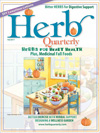Roots, Branches and Sky, a review of The Completely Revised Edition of The Reiki Sourcebook
By Beth Lowell
The very reason for the first edition of The Reiki Sourcebook’s wide success is also the reason for the new revised edition – its timeliness. Recognizing the rapid changes that have taken place in the world of Reiki during the past few short years since the book’s original publication, authors and founders of the International House of Reiki, Bronwen and Frans Stiene, have undertaken the Herculean task of revising what has been called the most comprehensive book about Reiki ever published.
Just as the idea behind the original book was to gather currently available information about Reiki rather than including new information about it, the revised version continues in this vein, expanding further on Reiki’s origins and history to explain how it got to where it is today, that is, a single system that sprang from one man’s vision less than 100 years ago in Japan that through time and circumstance has been changed, added to and reinvented into countless variations and branches.
The new version digs a bit deeper under the surface to get to the heart of the practice, and the book has been well reorganized to accommodate this expanded information. To understand Reiki, one must also understand the world of its creator. By learning about the culture and times of Reiki’s founder, Mikao Usui, a Buddhist monk of samurai descent, readers get an insight into the influences that shaped such a system. It’s much easier, for instance, to comprehend Usui’s revelation on Mount Kurama when one takes into account the complexities, influences and practices of Japanese Buddhism and martial arts as opposed to the distilled history commonly taught in some Reiki classes today: A man named Usui climbed a mountain and had a vision.
In the revised edition, readers get a closer look at what lies beneath the intellectual principles behind elements like mantras, symbols, and reiju, which as the Stienes state, brings a rational, rather than superstitious understanding of their uses and purpose. It is this de-mystification of Reiki that is needed right now in order to push it forward in a way that more people both within the Reiki community and those outside it can understand and accept.
Part of the importance of the section on Reiki’s past, too, is to give the reader not only details about the system as Usui taught it, but also to show how that information and information about Usui himself got slightly changed as his students passed the system on to their students, who then went on to develop their own branches of Reiki, modifying it yet again in an attempt to make it better, stronger, or suit the times, often incorporating ideas from different popular philosophies. These are the many, many Reiki branches of today, described at length in the new ‘Reiki Present’ section of the book.
The Reiki Sourcebook is still jam-packed with the comprehensive information that readers appreciated in the first version, not the least of which includes Japanese customs and etiquette, a brief section on kanji, traditional and non-traditional Reiki techniques, Reiki resources, an extensive glossary, and a translation of the inscription on Usui’s memorial stone. But new information in both the Reiki Past section of the book and also in what is the shortest, but by no means the least important section, Reiki Future, will be important to owners of the first version and new readers alike. Herein lies the crux of its purpose – to call on Reiki practitioners to realize that the path or ‘Do’ of Reiki is not separate from one’s life, and that the commitment of Reiki practitioners worldwide to it as a lifestyle will shape the evolution not only of Reiki, but also of the planet.
Reiki is at the cusp of something greater as practitioners seek and find answers to some of their long-standing questions about the practice. As more information becomes available about Reiki’s past, its practitioners gain more support in their work. This newfound knowledge allows them to evolve, developing a more grounded practice, based on the system’s original foundation.
As The Reiki Sourcebook notes, cohesiveness among the community is growing through dedication of practice, through finding common roots, and through open communication. Part of this cohesiveness is due to the Reiki Sourcebook itself. Having access to the most recent and detailed information is an invaluable tool and makes the addition of this book to any Reiki practitioner’s library – whether they own the original version or not – a must.
This coming together of the Reiki community serves only to improve the perception of Reiki, and with this stronger perception comes the possibility for Reiki to one day find its rightful place among other time honored practices like qigong, yoga and tai chi.
Thanks to this book, I know that day will be here soon.
































0 Comments:
Post a Comment
<< Home